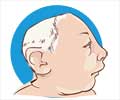Learn how following the WHO growth curves may misdiagnose Inuit children's head sizes, leading to health disparities.

Head circumference values among Inuit children in Nunavut, Canada: a retrospective cohort study
Go to source).
‘Using the World Health Organization (#WHO) growth curves as a basis for assessing Inuit children can result in the overdiagnosis of #macrocephaly (larger head size) and the underdiagnosis of #microcephaly (smaller head size). #medindia’





According to pediatric neurologist Dr. Kristina Joyal, "Clinicians must be able to identify children with potential medical issues appropriately, without underdiagnosis or overdiagnosis at the extremes of head circumference measurements”. Researchers used WHO head circumference charts and data on 1,960 children born between 2010 and 2013 to compare the head circumferences of Inuit children in Nunavut. Out of the 25 communities in the area, 18 were represented in the study population.
Head circumferences were significantly greater than the WHO comparators at all age stages, with the majority of data coming from children ages 0 to 36 months.
Need for Population-Specific Growth Curves for Children
“We observed larger median head circumference values, distinct patterns of growth curves, higher rates of children with head circumferences greater than the 97th percentile (macrocephaly) and lower rates of children with measurements below the 3rd percentile (microcephaly).”A percentile is a statistical measure that indicates the relative standing of a value within a dataset.
Advertisement
This can result in higher diagnoses of macrocephaly, with resulting travel, treatment, and other stressors in otherwise healthy children, and underdiagnosis of microcephaly, which can mean delayed attention to a medical condition.
Advertisement
“This unnecessary overinvestigation perpetuates a system that continues to bring harm to Inuit people, given the historical context of racism, mistreatment, and experimentation by settler health care workers,” write the authors.
They call for population-specific growth curves for Inuit children, developed in partnership with local communities.
“Our findings likely have implications for other Inuit populations in Canada and the circumpolar regions. The implementation of growth curves relevant to this population would necessitate ongoing discussion with Inuit organizations, health care professionals, and public health officials in these regions,” the authors conclude.
Reference:
- Head circumference values among Inuit children in Nunavut, Canada: a retrospective cohort study - (https:www.cmaj.ca/content/196/35/E1189)
Source-Eurekalert









